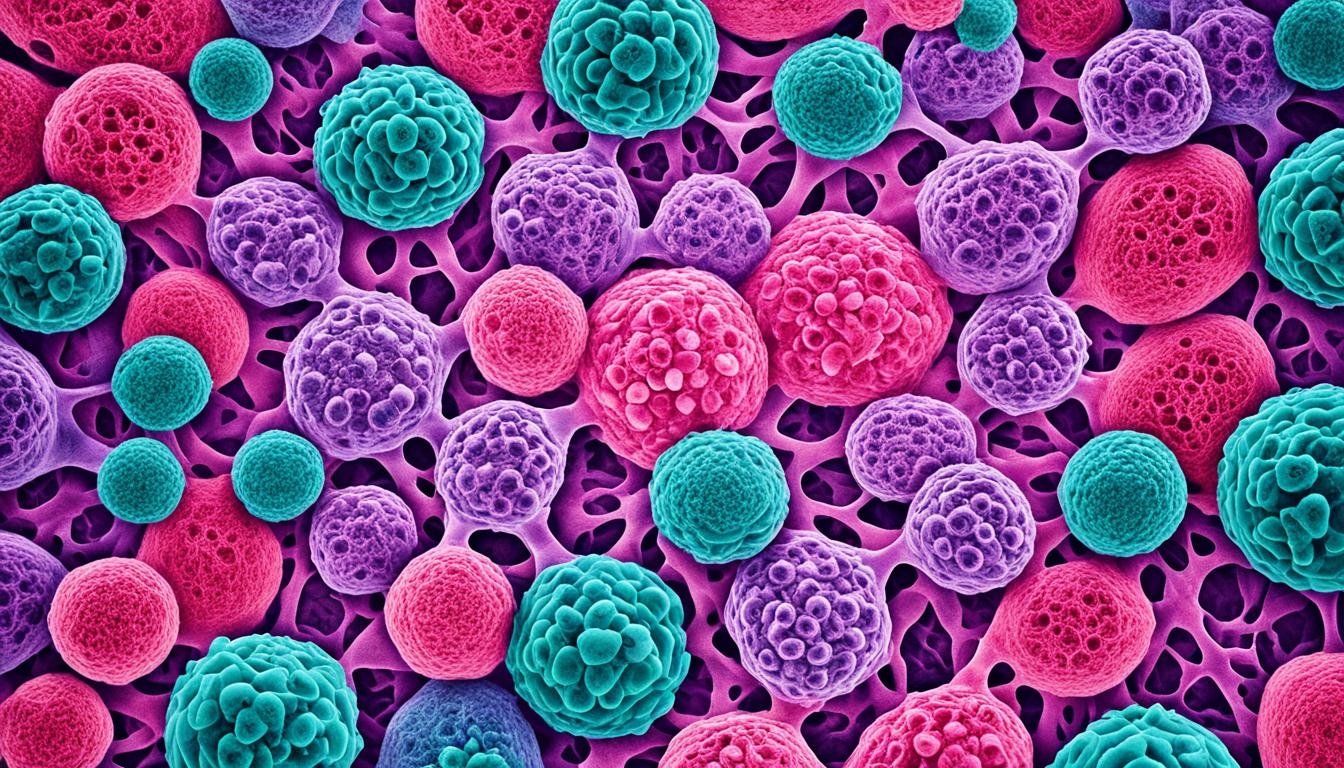Cervical cancer is a serious issue that many women face. It’s caused by a virus called the human papillomavirus (HPV). This virus connects to high-risk types, like HPV 16 and HPV 18. Not all women who get an HPV infection will get cervical cancer. But, regular screening is very important to find problems early.
At first, cervical cancer may not show any signs. But, as it gets worse, you might see things like bleeding after sex or pelvic pain. Other signs are weird vaginal discharge and pain while having sex. Things that raise the risk of getting this cancer include an HPV infection, having a lot of sex partners, or starting sex at a young age. Smoking and using birth control pills for a long time also add to this risk.
Doctors diagnose cervical cancer with a variety of tests. These include physical and pelvic exams, pap tests, and checking for HPV. They may also need to do an endocervical curettage, a colposcopy, and a biopsy. These tests help the doctors know how bad the cancer is. This ranges from stage 0 (just abnormal cells) to stage IV (it’s spread to other parts of the body).
The chances of getting better from cervical cancer depend on many things. This includes the stage it’s in, your cancer type, and your overall health. Also, if you have certain types of HPV or if the cancer is new or came back. Early finding and treating cervical cancer makes the chances of getting well much better.
The main way to treat it is with surgery. But, there are new treatments being studied in clinical trials. One of these is stem cell therapy. The goal of stem cell therapy is to fix or replace damaged cells in the cervix. It aims to help the body fight cancer better. So far, it has done well in fixing damaged tissue and reducing swelling. But, we still need more study to make sure it’s safe and works.
Key Takeaways:
- Cervical cancer is primarily caused by an HPV infection, particularly high-risk types such as HPV 16 and HPV 18.
- Regular screening, including pap smears and HPV tests, can help detect cervical abnormalities early on.
- Common symptoms of cervical cancer include vaginal bleeding, pelvic pain, and unusual discharge.
- Risk factors for cervical cancer include HPV infection, multiple sexual partners, early sexual activity, smoking, and long-term oral contraceptive use.
- Diagnosis involves various tests, including a physical exam, pap test, HPV test, colposcopy, and biopsy.
Stem Cell Therapy for Cervical Cancer
Stem cell therapy is a new way to fight cervical cancer. It uses stem cells to fix or change bad cells in the cervix. This helps the body’s natural power to fight cancer.
Stem cells come from many places like bone marrow, cord blood, and fat tissue. After gathering them, they’re made ready for use in the cervix.
Recent tests show good signs. Stem cell therapy can repair damage, lower swelling, and make the cervix healthier overall.
But, we still need more studies to be sure it’s safe and works well for cervical cancer.
Stem cell therapy is only one part of treating cervical cancer. Other treatments might include surgery, radiation, chemo, and specific therapies.
Advancements in Stem Cell Therapy
New progress in stem cell therapy is bringing fresh treatments for cervical cancer. Scientists are looking at different stem cell types. They want to see if these can make the therapy work better.
They hope to make stem cells better at healing tissue, controlling the immune system, and aiming at cancer cells only.
Also, they’re checking out gene editing with CRISPR-Cas9. This could make stem cells even better at fighting cancer.
All these steps forward could lead to much better results in cervical cancer care, giving both patients and doctors new hope.
Prevention and Awareness of Cervical Cancer
Prevention and awareness matter a lot in the fight against cervical cancer. To fight this disease, we must use strong prevention methods and make people more aware. This way, we can lessen how many people get sick and save lives.
Getting the HPV vaccine is a big part of preventing cervical cancer. It’s not just for girls. Boys should get it too. This vaccine guards against some HPV types, lessening the threat of cervical cancer. Don’t forget about getting checked regularly with procedures like pap smears and HPV tests. Early checks can catch issues before they turn into cancer, and you can get help fast.
Remember, safe sex and not smoking are also key. Using protection and cutting risky sexual habits lowers the chance of getting HPV. And putting out the cigarette is a must. Smoking makes the risk of cervical cancer higher.
Telling people through campaigns and education is a big help in preventing cervical cancer. Teaching women that they should have regular checks, get the vaccine, and live healthily can really empower them. Knowing what raises the risk, like HPV, certain habits, and smoking, helps folks make smart choices for their health.
Cervical cancer is a challenge worldwide. It’s the fourth most common cancer among women. In 2020, there were about 570,000 new cases and *311,000* deaths. We need more education, more prevention, and better chances for check-ups and care. This way, we can fight cervical cancer and hope for a world where this disease is no longer a threat.

